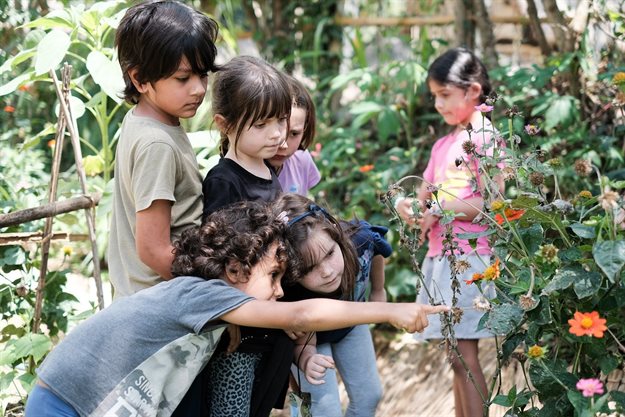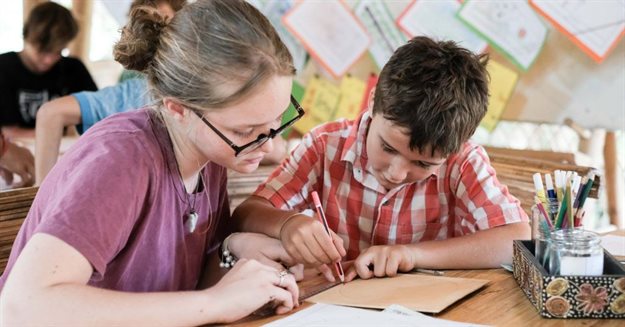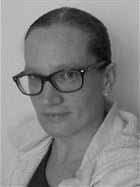There's a new school on the block - or more specifically, on eight hectares near Paarl in the Cape Winelands. Green School South Africa is modelled on the first Green School established in Bali in 2008, and is the third in a planned international network of Green Schools, following the establishment of the second campus in New Zealand.
Constructed from naturally and locally sourced materials, the school is powered by solar-generated electricity, and the water balance has been carefully calculated to ensure that water extracted from the river and borehole is replenished with rainwater received. Administrative buildings and classrooms are set within vegetable gardens, orchards and grain fields.
The school will open in line with government regulations on 15 February 2021, with a planned enrolment of 150 learners and 15 teachers. The Green School offers education from kindergarten to Grade 8 in 2021 and will expand to provide education up to Grade 12 by 2025. The school aims to maintain a ratio of one teacher to 10 learners.
Here we chat more to the Head of Green School South Africa, Andy Wood, about the school's foundation, curriculum and learning experience.
Tell us about Green School South Africa - from concept to curriculum?
Andy Wood: What are you hoping your child’s school experience will be like? Imagine a school where innovation, curiosity and learning flourish. A school in which each child’s unique talents are not only recognised but nurtured. A school that is serious about its academic standards but is a joyful place, one where the laughter of children fills the open spaces. A school that is carefully designed to promote a sense of peace, where nature and the mountains are visible from every classroom. A school whose teachers are selected for their energy, passion and ability to connect with young people.

Our curriculum is the result of a systematic referencing of the best of international education: British, American, New Zealand and Singapore to name but a few. We will have a strong academic foundation, and as a minimum meet the standards of the South African curriculum, but it is in our teaching methodology and approach to assessment that we will be significantly different. Seeing children learning by doing, hearing deep and meaningful student discussions, sharing in the daily growth of a child as a whole person and being inspired by a vibrant community of learners is the Green School experience. We want to ensure that our children really understand the concepts rather than simply memorising facts to score marks. Yes, there will be Maths and spelling tests, but we are more concerned about creating a love of writing and mastering the ability to solve real life problems with the Mathematical skills they have mastered.
Green School’s focus on sustainability and entrepreneurship creates a unique educational environment in which young people can think innovatively and be solution-focussed. Each of our learners has a ‘passion project’ every year. It may be a science and technology one, serving the community in some way, or being involved in a local NGO, as examples. These are opportunities to discover and explore their talents and passions, to think outside the box, try things that may not always work out and develop a can-do attitude. What new technologies can be imagined and brought to fruition that could revolutionise production and consumption of energy? At Green School, we create the environment in which young people can explore new solutions to problems that the older generation haven’t thought of ...yet.
The South African institution is modeled after the original Green School Bali. How has the Bali school's development progressed over the last 13 years?
Wood: Creativity often springs from the confluence of disparate ideas and events, and such was the case with Green School.
Green School was conceived by its founders, John and Cynthia Hardy in 2006. After years of home-schooling, the Hardys wanted their daughters to attend a ‘real’ school. John wanted the girls to attend a school that he believed in, a school that he would want to attend, a school that was connected and respectful of the people and culture of Bali and that gave children the skills and abilities they needed for the world of today and the future. When he read Alan Wagstaff’s Three Springs, he was so inspired by the dream that he wanted to build a school, based on these concepts, in Bali.
John and Cynthia became compelled to move forward with the school after seeing Al Gore’s An Inconvenient Truth. This changed their lives and with a clear vision and purpose in mind, in August 2006, they embarked on building the school.
The School’s bamboo bridge, spanning 22m across the Ayung River, was completed in November 2006, creating a beautiful, strong symbol of the transition from the realm of idea to reality. Green School opened in September 2008 with 90 students and a tailor-made campus that emerged from the jungle and rice fields. Today, Green School has grown to many times that size and is an inspiring example of education for sustainability.
The Covid-19 pandemic severely impacted contact learning in 2020 and with the postponement of the start of the 2021 school year, we may continue to see setbacks in the academic space. What does this mean for the launch of the school, and what contingency plans do you have in place to navigate these issues to ensure continued learning?
Wood: With our hands-on, outdoors, inquiry-based approach to teaching, a Green School experience is just not the same online. That said, during the strict lockdown we ran a successful online Explorer’s Club, which was lots of fun. We are optimistic that schools will reopen on the 15th and that we can welcome the laughter and smiles of our children on campus. We will comply with the mandated health and safety protocols, aware that if we adopt a calm, positive approach, our children will follow our lead. What is key is that we implement the measures in a kind and gentle manner and that we all do so consistently.
Is there scope for more schools in South Africa?
Wood: Of course. Parents and children are increasingly aware that our current model of education is in need of a significant change. The challenge is to source funding for the development of further Green Schools.
What else should parents and learners know about the school?
Wood: If you would like to learn more about Green School, please visit the website or contact the school on az.oc.asloohcsneerg@snoissimda.




















![Source: [[
https://www.pexels.com/search/power%20lines%20stretching%20across%20the%20South%20African%20landscape/ Pexels]]](https://biz-file.com/c/2506/777310-240x135.jpg?5)




























